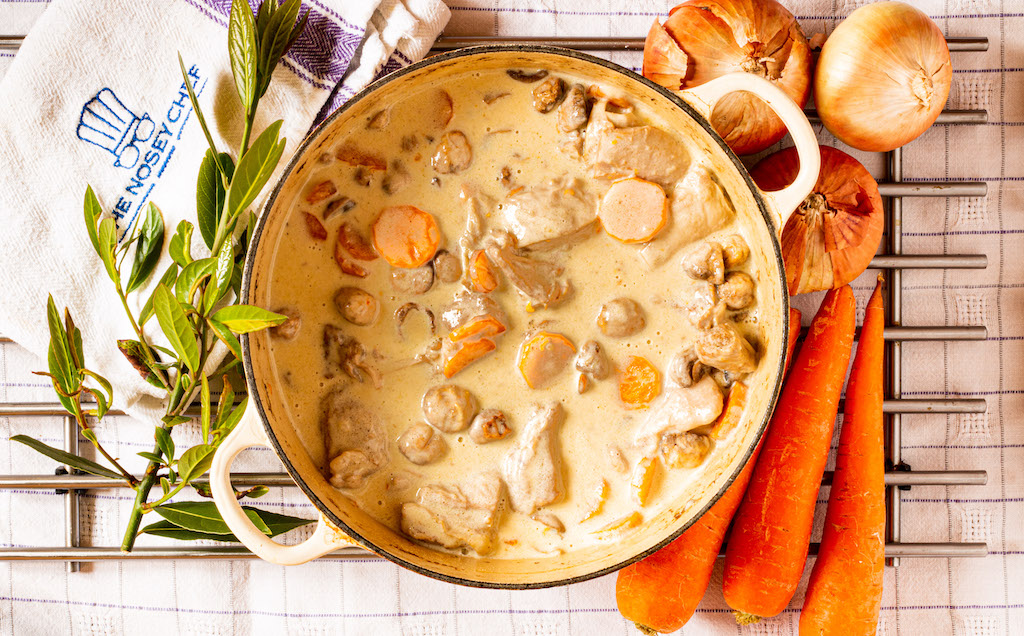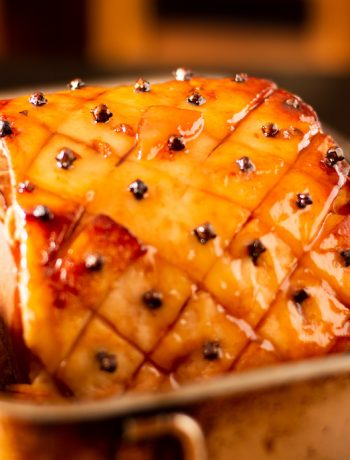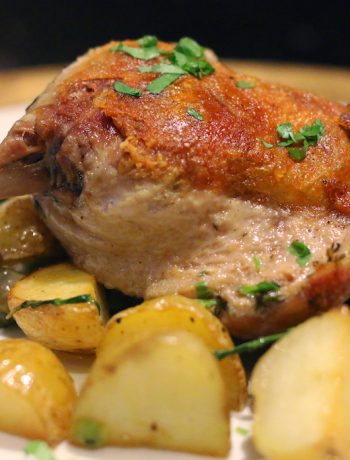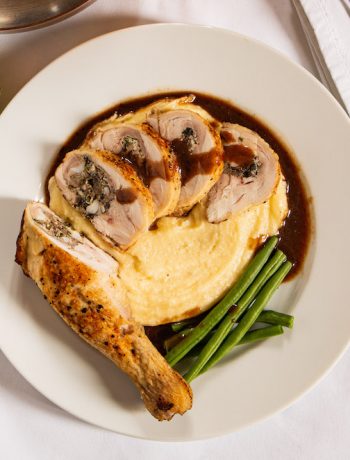Blanquette de veau is a slow-cooked dish where, in contrast to other casseroles, the meat is given absolutely no colour whatsoever. The dish gained popularity in the 18th Century at a time when the well-to-do of France were obsessed with elegance, and eschewed anything that might be evocative of the common peasantry. The peasants were eating stews ‘à la brun,’ so creamy, white blanquettes were naturally all the rage – the dish became a classic of bourgeois cuisine.
The first record of a recipe for blanquette de veau was in Vincent La Chapelle’s 1735 Le Cuisinier where it was made with left-over roast meat, onions, and mushrooms. It was recommended as a starter. In 1867, Jules Gouffé published a recipe that began with raw meat.
Due to its appeal as a colourless dish, the most controversial ingredient in a blanquette seems to be carrots. There is a notion that the blonde look of the finished dish is sacred, and that nothing ought to be added that adds colour. However, most cook books, including the mighty reference volumes of Le Guide Culinaire and Larousse, include carrots in their blanquettes.
Carrots have been carried forward into present-day Paris, and the recipe we have supplied here is by none other than Christian Constant. Constant heads up the legendary, Michelin-starred Le Violon d’Ingres in the 7th Arrondissement. Le Violin d’Ingres is one of eight restaurants in the Constant empire, which includes three establishments that go by the name of ‘Les Cocottes.’ These three less-formal restaurants specialise in cooking food low and slow in Dutch ovens – exactly like a blanquette de veau. So, if you have a Christian Constant blanquette bubbling on the stove, you can be sure you are going to have a good meal.

This recipe was printed in English in Let’s Eat France by François-Régis Gaudry. There has been a recipe listed on the Maison Constant web site, but it has long gone (along with the rest of the Constant recipe archive). Fortunately, we were able to use the Internet Wayback Machine to locate the original and extract it to a PDF. It’s identical.
There are some tips to blanquette success in the kitchen. The first is meat choice. Veal is the traditional one, but you can use other white meats like rabbit and chicken. Secondly, using an enamel pot like a Le Creuset Dutch oven helps a lot as the enamelled surface is less likely to brown anything by accident. You will probably end up with more sauce than you need, so feel free to ladle some out and discard. Blanquettes are traditionally served with rice. Escoffier suggests noodles. Constant suggests pilaf.
Les Cocottes can be found at 135 Rue Saint-Dominique, 75007 Paris, France.
Blanquette de veau Christian Constant
Ingredients
- For the meat and vegetables:
- 1kg veal from the shoulder and neck, cut into 3–5cm cubes
- 3 cloves of garlic, peeled
- 2 carrots, sliced
- 1 onion, peeled and studded with 4 whole cloves
- 1 bouquet garni made from a tied bundle of parsley stalks, thyme and leeks.
- 1 bay leaf
- For the white roux:
- 35g butter
- 35g plain flour
- For the mushrooms:
- 150g closed-cup button mushrooms (halve any big ones)
- 50g butter
- Juice of half a lemon
- To finish the sauce:
- 200ml double cream
- Juice of the rest of the lemon
- Sea salt and freshly ground white pepper
Instructions
Place the first 6 ingredients in a deep, enameled pot, add a pinch of salt, cover with water, bring the the boil, and then simmer on low covered for 3 hours. The veal is done when it breaks apart easily with a fork.
While the meat is cooking, make the roux by combining the butter and flour in a pan over heat until the butter is melted, and the flour has cooked for about 2 minutes. Place the roux in the fridge.
To cook the mushrooms, add the butter and lemon to 100ml of water and heat to melt the butter. Add the mushrooms and simmer for 5 minutes. Lift the mushrooms out with a slotted spoon and set aside. Pour the remaining liquid into the pot with the veal.
Once the veal is done, lift everything out of the pot with a slotted spoon. Discard the bouquet garni and the onion. Keep the meat and carrots.
Increase the heat under the pot and reduce the stock until only about 1.25 litres remains. Strain through a fine mesh sieve to get rid of any bits and put it back in the heat. Add the cream and the cold roux. Whisk until the roux melts and the sauce thickens. Season to taste and squeeze in the juice from remaining lemon half.
Add the meat, carrots and mushrooms to the sauce, coat everything evenly and serve.
Notes
For 2kg of veal, just double the recipe. To work out how much stock you have left to get your required volume for the sauce, pour the correct volume of water into the cooking pot before you start, and mark off a wooden skewer with the water level – you now have the perfect volume dipstick.






No Comments